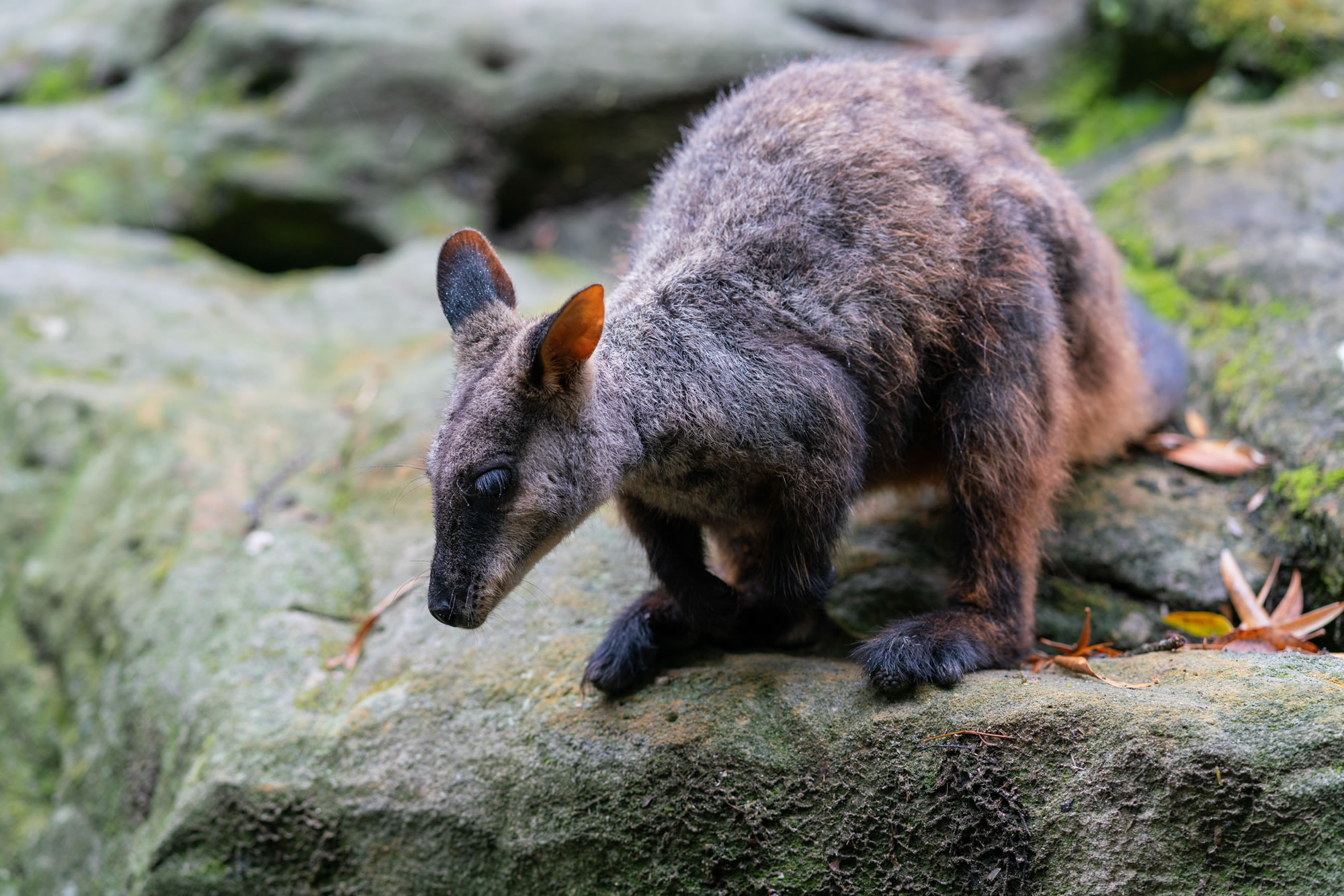Brush-Tailed Rock-Wallaby
A unique and beautiful acrobat of the marsupial world, the brush-tailed rock-wallaby (Petrogale penicillata) leaps and bounds its way around rocky outcrops in rugged and steep country along the east coast of Australia.
Once hunted for its fur and now under threat from vegetation clearing and development and introduced species like foxes, the brush-tailed rock-wallaby is listed as a vulnerable species in Queensland.
Previously unknown populations of brush-tailed rock-wallaby have been found living on our Aroona Station in South East Queensland, giving us an exciting opportunity to protect and better understand this incredible species and its habitat.
Make your impact
- Own and manage Aroona Station, a working cattle property which also hosts ecosystems that support colonies of brush-tailed rock-wallaby.
- Deploy conservation teams and volunteers to protect, restore and revitalise brush-tailed rock-wallaby habitat on Aroona Station.
- Use sustainable land management practices, including pest animal control and fire management, to safeguard the brush-tailed rock-wallaby from harm.
- Spearhead and collaborate on research programs with scientists and universities to ensure the long-term survival of this vulnerable species of rock-wallaby.

- It is thought that only around 15,000-30,000 brush-tailed rock-wallaby survive along the Great Dividing Range from eastern Victoria, through New South Wales to South East Queensland.
- Aroona Station provides habitat for three colonies of brush-tailed rock-wallaby.
- QTFN and our research partners, including the University of Queensland, are working together to better understand the brush-tailed rock-wallaby’s lifecycles, behaviours and breeding habits.
- We’re using advanced technology and research techniques such as wildlife cameras and facial recognition technology to track, monitor and learn more about these precious residents and increase their chances of survival.
- We share our knowledge with fellow Little Liverpool Range Initiative members so they too can use land management, pest control and conservation practices to support the local brush-tailed rock-wallaby population.

Our work
- Own and manage Aroona Station, a working cattle property which also hosts ecosystems that support colonies of brush-tailed rock-wallaby.
- Deploy conservation teams and volunteers to protect, restore and revitalise brush-tailed rock-wallaby habitat on Aroona Station.
- Use sustainable land management practices, including pest animal control and fire management, to safeguard the brush-tailed rock-wallaby from harm.
- Spearhead and collaborate on research programs with scientists and universities to ensure the long-term survival of this vulnerable species of rock-wallaby.

Our impact
- It is thought that only around 15,000-30,000 brush-tailed rock-wallaby survive along the Great Dividing Range from eastern Victoria, through New South Wales to South East Queensland.
- Aroona Station provides habitat for three colonies of brush-tailed rock-wallaby.
- QTFN and our research partners, including the University of Queensland, are working together to better understand the brush-tailed rock-wallaby’s lifecycles, behaviours and breeding habits.
- We’re using advanced technology and research techniques such as wildlife cameras and facial recognition technology to track, monitor and learn more about these precious residents and increase their chances of survival.
- We share our knowledge with fellow Little Liverpool Range Initiative members so they too can use land management, pest control and conservation practices to support the local brush-tailed rock-wallaby population.


